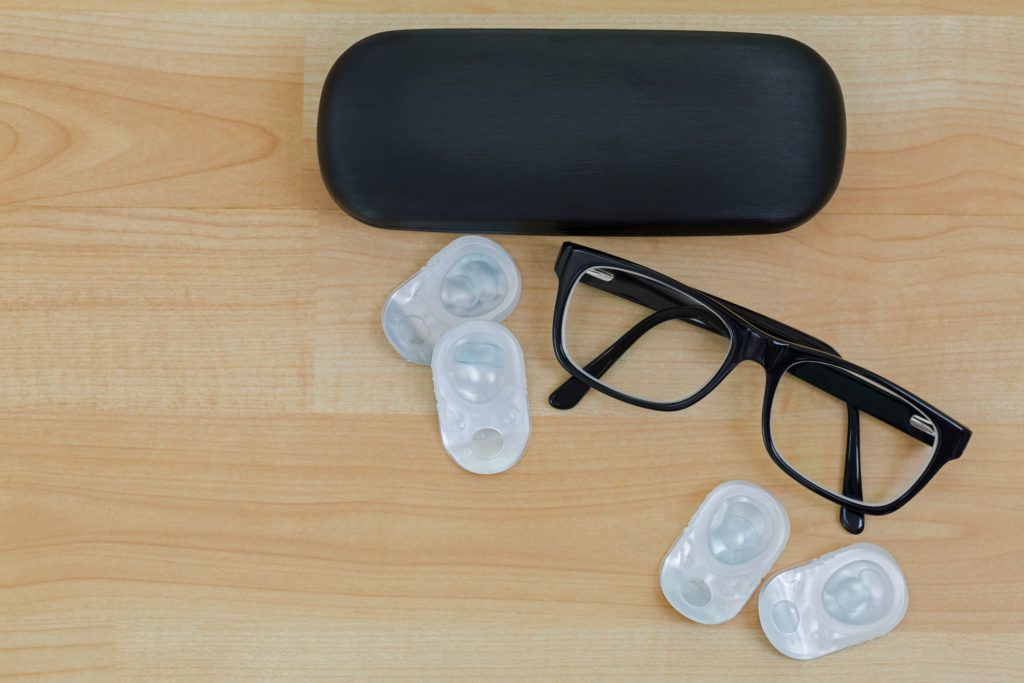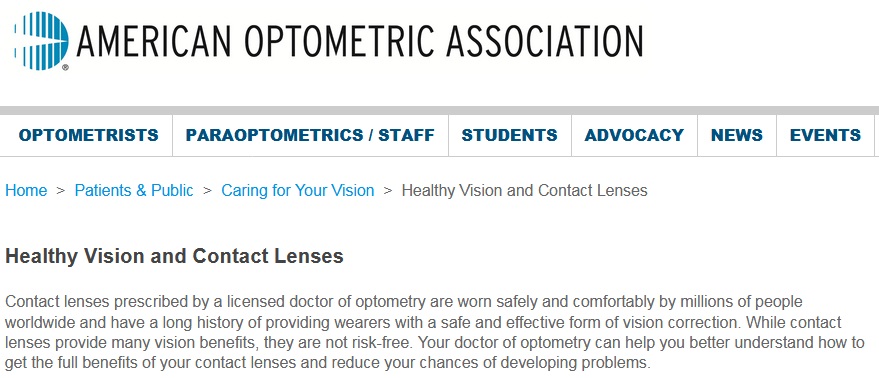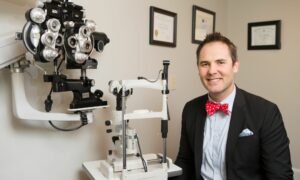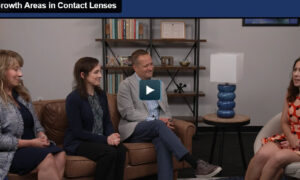By Steven A. Loomis, OD

Oct. 24, 2018
Contact lenses enhance patients’ lives, allowing them to sometimes forego glasses, and, in the process, these patients enhance practice growth and profitability.
For these reasons, a concerted effort to prevent contact lens dropouts is essential to a successful practice. The reality is that contact lens patients can be significantly more valuable to a practice over the long term, according to research from the Management & Business Academy. Contact lens patients:
• Have more frequent eye exams (annually)
• Pay higher fees for exams (average of $96 versus $70)
• Make more frequent purchases (every year versus every 28 months)
• Also buy and use eyeglasses and sunwear
Recent VisionWatch research findings from The Vision Council show that the market for contact lenses is growing faster than the markets for frames and lenses, with the contact lens market growing 4.1 percent from Dec. 2016 to Dec. 2017, frames growing 0.2 percent, and lenses -1.3 percent, during that same time period.
I personally see about 24 patients a day in my practice, 80 percent of whom require refractive correction at some point, and of those, roughly one-third choose contact lenses.

The American Optometric Association (AOA) has resources that can help doctors educate patients on healthy contact lens wear, says Dr. Loomis. Click HERE, or the image above, to access those resources.
Address Discomfort
For all patients, it can be problematic to fall asleep in contact lenses unless those lenses are specifically designed for continuous wear and the patient’s corneas are healthy enough to tolerate continuous wear. Continuous wear remains the riskiest modality for contact lens wear and must be managed carefully.
New CL-Wearing Experience for Presbyopes
Presbyopia adds a whole new layer to the vision correction demands of the patient. The good news is that presbyopic corrections in contact lenses are getting much better. While some patients continue to do well with “old school” solutions like monovision, multifocal contact lenses are improving all the time, and are now available across the entire spectrum of contact lens modalities. More good news is that patients really want these improvements to continue with their contact lens wear.
The challenge, however, for both patient and doctor is that sometimes the visual experience is somewhat different than the experience the patient had when they started wearing contact lenses as a teenager. It’s important for the doctor to properly manage the expectations of the multifocal contact lens patient, sometimes understanding that “20/Happy” at multiple distances is better than 20/20 at only one distance.
Red Flag: Patients Have Contacts Left Over at Annual Visit
When patients come in for their annual examination and tell me that they still have “plenty of contacts” left, that tells me something’s probably wrong with how that lens is performing relative to their needs and expectations.
Other Articles to Explore
I think it’s important to probe by asking directly, “Why aren’t you wearing your contact lenses as much anymore?”
Left over because of discomfort: Often the patient reports either comfort or vision issues, but then quickly adds, “But it’s OK, I don’t mind my glasses.” I challenge that last statement a little. “If we could solve that issue, and make your contact lenses clearer or more comfortable, would you like that?” Often, patients have lowered their expectations to be consistent with their experience and are surprised to learn that newer, better lens technologies are available.
Too many lenses left over at the end of the year also could signal a patient who is wearing their lenses past the recommended disposal time.
Left over because of over-wearing: I always ask a patient how often they’re replacing their contact lenses, really, how often? Sometimes, a patient admits freely that they do not adhere to the recommended replacement schedule.
If, for example, a patient using a two-week lens says they replace them monthly, I’ll respond by explaining why replacement schedules are important to the health of the eye, and then conclude, “But if you’d prefer to replace them monthly, I can provide a lens for you that is safe to change monthly.” This is also an opportunity to introduce them to the notion of daily disposable contact lenses, and how improved safety and convenience can be an asset to them.
More commonly, however, patients can be embarrassed to admit that they’re abusing their contact lenses by over-wearing them. It’s not unusual for the doctor to see signs of that during the slit lamp examination, and that’s an important teaching moment for the patient. Describing the negative health effects of over-wearing provides an easy segue to describe the health benefits (if applicable) of daily disposable contact lenses. I haven’t met a patient yet who didn’t agree that a new lens out of the package felt better than an older lens out of their contact lens case.
Key Questions & Conversation Starters
It’s always important to probe a patient on their eyecare experience, whether it’s about their dry eye, glaucoma drops, vision while working on a computer or their contact lenses. Some patients tend to not tell their doctors relevant information unless specifically asked.
Asking a patient a general question of “Are you doing OK with your contact lenses?” is likely to reveal much less than a question like, “Are your contacts still as comfortable at the end of the day as at the beginning?” or “Are you ever frustrated that you can’t see things nearby with your contact lenses like your phone or your car dashboard?”
Asking specific comfort and vision questions will likely result in a conversation about the patient’s needs and give the doctor an opportunity to offer solutions to the patient before the patient considers dropping out of their contact lenses. It’s also an important time to go over contact lens care by asking the patient how they care for their lenses.
Educate Patients: Only Buy from Trusted Source
There are online retailers, like Hubble, that sell contact lenses that are composed of less technologically advanced material, and which are not as oxygen-permeable as the latest designs of contact lenses. In fact, the lens parameters of a substituted Hubble lens can bear little resemblance to the original prescription written by the doctor.
Educate patients that the products they get from online contact lens sellers may not be of the same quality as those you have prescribed, and that it is important they have a comprehensive annual examination. Show them why your office is the place to come to preserve their eye health and stay in their contact lenses for years to come.
 Steven A. Loomis, OD, is the owner of Mountain Vista Eye Care and Dry Eye Center in Littleton, Colo., and past president of the American Optometric Association.
Steven A. Loomis, OD, is the owner of Mountain Vista Eye Care and Dry Eye Center in Littleton, Colo., and past president of the American Optometric Association.

























